From learning about Cambodia’s bitter past in Phnom Penh, we took another six-hour mini van ride (Golden Bayon) to Siem Reap. With our photography gears, light backpack, and comfy rubber shoes on, we felt extremely ready to traverse the Angkor Archaeological Park complex, take pictures of the temple ruins, and visit other famous landmarks in Siem Reap in three days.
It was the third and last city we visited, and it was my personal favorite. Throughout the trip, I was most excited to see the splendor of Angkor Wat, and the reason was obvious: “Angkor Wat is one of the largest monuments to religion ever built and is one the wonders of the world.” It’s really a place like no other. 🙂

Here are the top sites we visited in Siem Reap following the itinerary arranged once again by our trusted travel agent, Transpipol Travel & Tours.
Top 10 Tourist Attractions We Visited in Siem Reap, Cambodia
1. Artisans d’Angkor
Upon reaching Siem Reap, we stopped by New Bayon, a local Cambodian restaurant, for lunch and immediately headed to the Artisans d’Angkor to appreciate the handmade products of the Khmer culture. This arts and crafts center in Stung Thmey Street was created in 1999 to help young people find work in their home villages by training them for free in the different workshops.
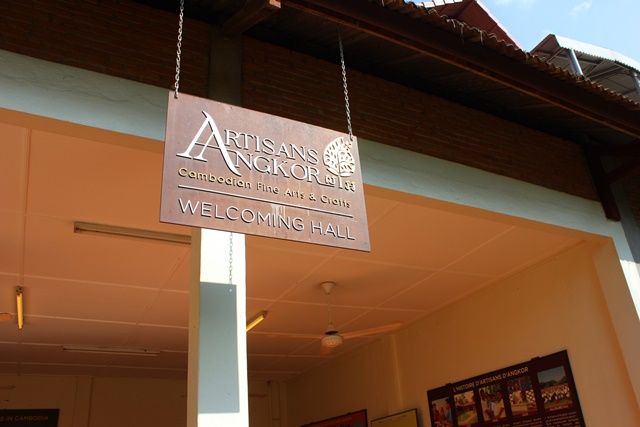
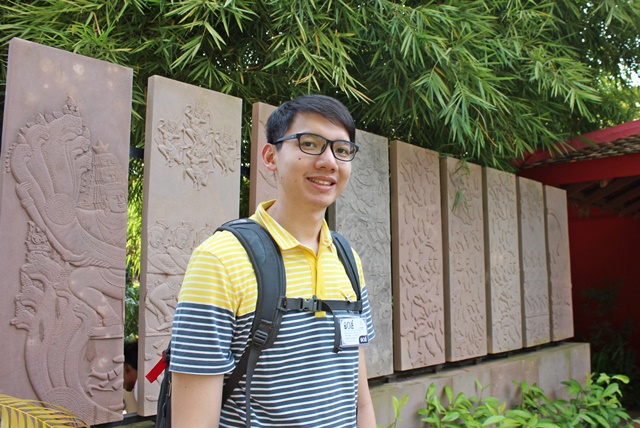
Artisans d’Angkor invests in building new apprenticeships who will revive the traditional craft skills in Cambodia such as stone carving, wood carving, lacquering, gilding and silk processing. These young apprentices aged 18 to 25 are selected from rural areas through skill and motivation tests. They undertake six to eight months of training. Some of them are deaf and mute, so it’s both interesting and inspiring to know that they’re still willing to learn and able to utilize their God-given skills to create wonderful things.
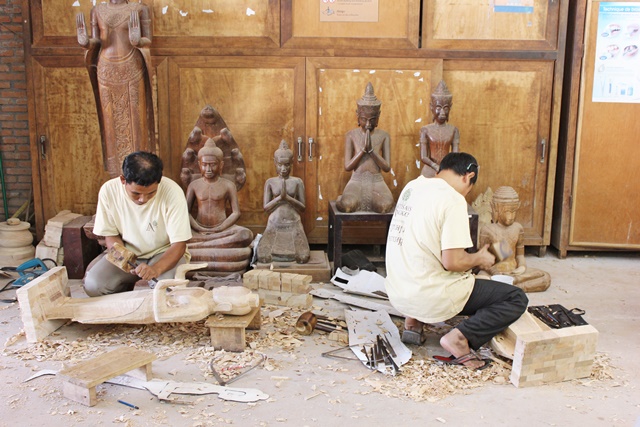
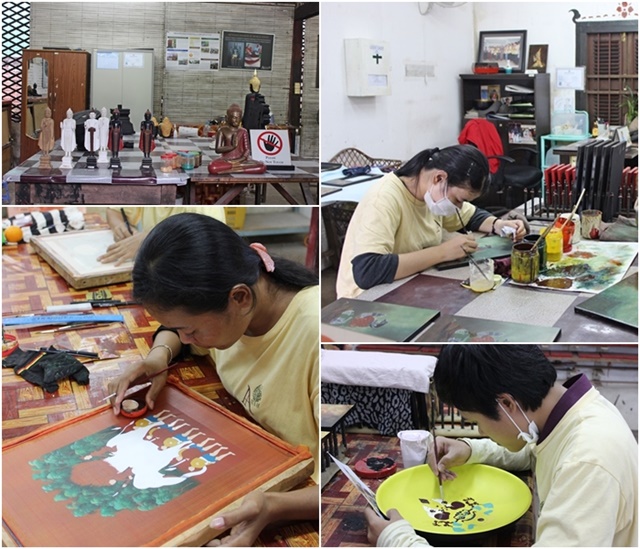
An English-speaking guide took us to the workshop areas, and there we saw the steps in creating intricately designed products such as wares, statues, figurines, decors, and souvenir items from raw materials. The setup was much like a manufacturing factory where one team/individual does a step and then moves it to the next to transform raw materials into finished goods. Guided tours in Artisans d’Angkor are also available in Khmer, French, German, Japanese, Chinese, and Thai and are being conducted daily from 7:30 AM to 5:30 PM.

At the end of the tour, we went to the boutique where they sell the finished products in their show room. Prices of the items are steep, but if you’re a fan of high quality workmanship and want to bring home unique memorabilia to family or friends, they may just be worth every dollar. 😉
2. Angkor National Museum
The Killing Fields in Siem Reap was initially part of our itinerary, however since we have already visited the one in Phnom Penh, we requested the travel guide and driver to drop us at the Angkor National Museum instead.
The Angkor National Museum presents the origins of Khmer art, culture, and architecture in great visual formats. Respective descriptions of the artifacts are placed on labels, and for further comprehension, videos telling about introductions about them can be played over and over again in different languages. The remnants, statues, artefacts all depict scenes in history related to war, religion, and manners of social customs throughout the evolution of the Khmer civilization.
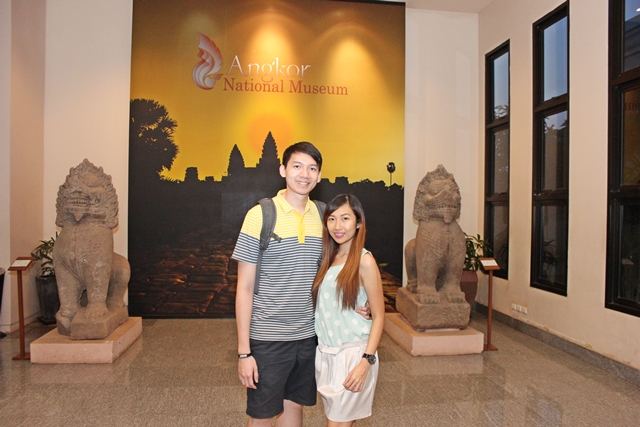
Entrance fee per person was $12 (a bit high), so we spent our time well to understand the deep Angkor context behind galleries and exhibits to make the most out of what we paid for. In addition, an audio tour in Khmer, English, German, Korean, Japanese, French, Chinese, and Thai is also available for $3. (Note: Taking of photos in the galleries is prohibited.)
3. Banteay Srei
On the next day, early in the morning, we had to buy our tickets to the Angkor World Heritage (good for one-day pass) at the ticket center. Visitors all have to show their tickets to the guards in every temple entrance.

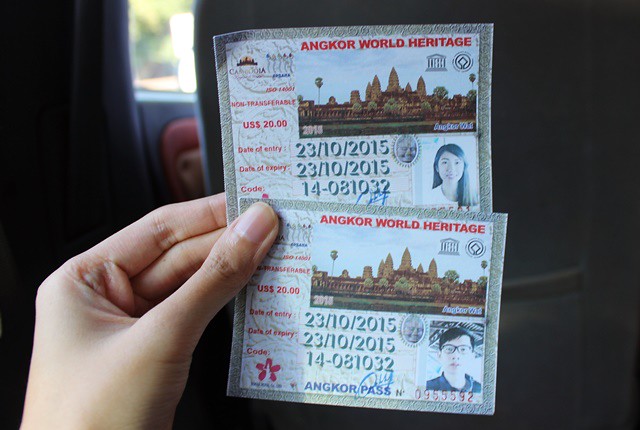
Our first stop was the beautiful Banteay Srei. It’s quite far from Angkor Wat, but since we were already there in Siem Reap, we surely could not miss it. Banteay Srei is a 10th-century Hindu temple complex that features well-preserved relief carvings depicting tales and scenes from ancient Hindu dieties. The southern buildings and the central tower were devoted to the Hindu God Shiva, while the northern ones, to Vishnu.
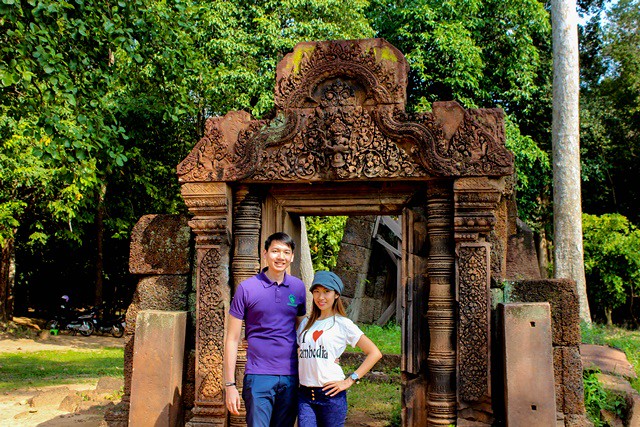
Displaying fine examples of classical Khmer art, this temple was built largely of red or pinkish sandstone. It’s amazing how all of these were done by hand. Such detail at such scale would have taken lots of hard work. What’s even more amazing is that these were created and designed in 967 by Yajnavaraha, a Brahmin priest and counselor of King Rajendravarman II and his brother. I would not have thought that people back then could be super creative. How they drew and planned out the architecture remains a mystery.
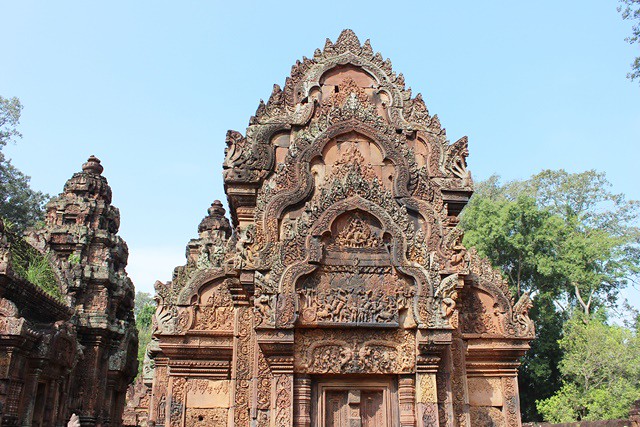
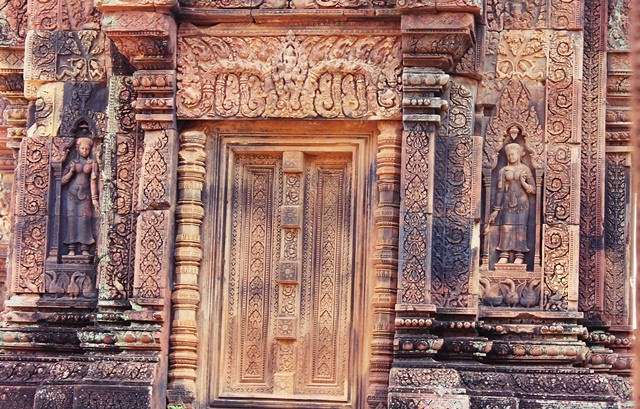

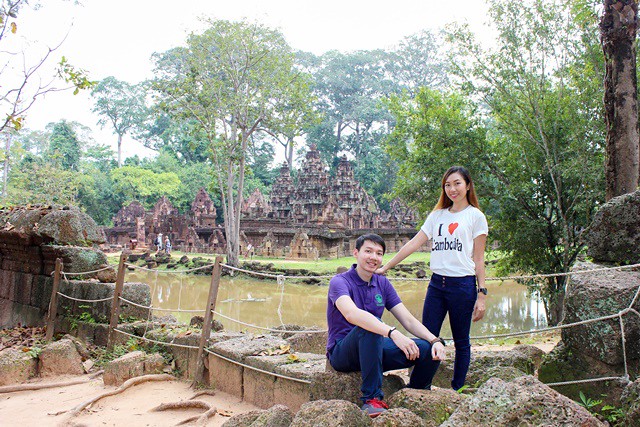
4. Angkor Wat
Next, we moved to the major attraction in Siem Reap: Angkor Wat. Its beauty and state of preservation is truly unrivaled. There are a few places I have been where I get a feeling that’s hard to put into words, and this masterpiece is one of them. It’s like a combination of a sudden overwhelming feeling of joy that hits you so hard it almost hurts your chest. It’s just impossible to stop smiling and at the same time feel incredibly calm.
I’ve seen its magnificence on pictures and videos before, but its vastness, complexity, and the beauty of its design are not comparable. From the many steps leading us to one of the gates, Angkor Wat appeared to be a giant mass of stone. Up close though, it looked like a series of elevated towers, chambers, porches, and courtyards on different levels linked by stairways.
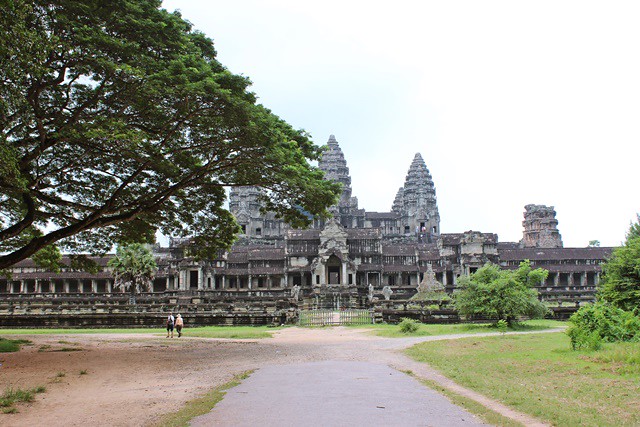

We walked up the stairs and felt so tired. But all that were somewhat gone as we realized that we were on the world’s largest religious building, the “mother of all temples,” as Angkor Wat is known. When we finally reached the top, we stopped for a few minutes to appreciate the grandness of it, the scenery below, and the crisp, sunny day that made us perspire most copiously.


5. Bayon Temple
We had lunch at Samroh Sra Srang Restaurant then explored the features of Angkor Thom. Angkor Thom was built as a square. The vast area contains many stone temples and has five gates. The sides run exactly north to south and east to west, and standing in the exact center of the walled city is Bayon Temple, which represents the intersection between heaven and earth.

Bayon Temple is a Buddhist temple but retains elements of Hindu cosmology and imagery. If you would notice, carved in the stones are enigmatic smiling faces of people. The 49 towers were each decorated with the four faces of the compassionate Bodhisattva Avalokesvara with a combination of king Jayavarman VII’s face as well. These faces symbolize the four sublime states of Buddhism: charity, compassion, sympathy, and equanimity.
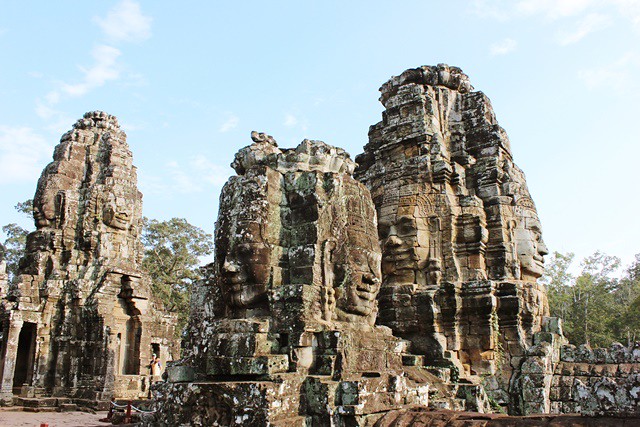
It’s notable that Bayon Temple was the last stone temple ever built in the period of the Khmer empire because the country began to decline as construction of the temple was finished. Sadly, some of the faces are now destroyed and not anymore restored.


6. Baphuon Temple
Also located in Angkor Thom, northwest of the Bayon Temple is the three-tiered temple mountain Baphuon Temple that’s dedicated to the Hindu God Shiva but later was converted to a Buddhist temple. Our tour guide, Thear, told us to climb the stairs to see the 9 x 70 meter long statue of a reclining Buddha on the second level, but we were too tired so we ended up just taking pictures by the entrance gopura of the temple. 🙂

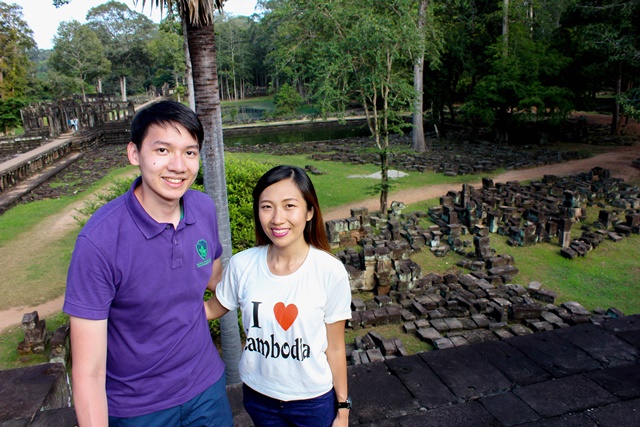
7. Ta Phrom
For those who have watched Tomb Raider starring Lara Croft/Angelina Jolie, you may be familiar with Ta Prohm. This was where parts of the trailer and the movie scenes were shot. Great trees tower above the entire site and the way the plants and vines creep through looked wonderful. The resulting effect was like a cross between nature and man-made art.
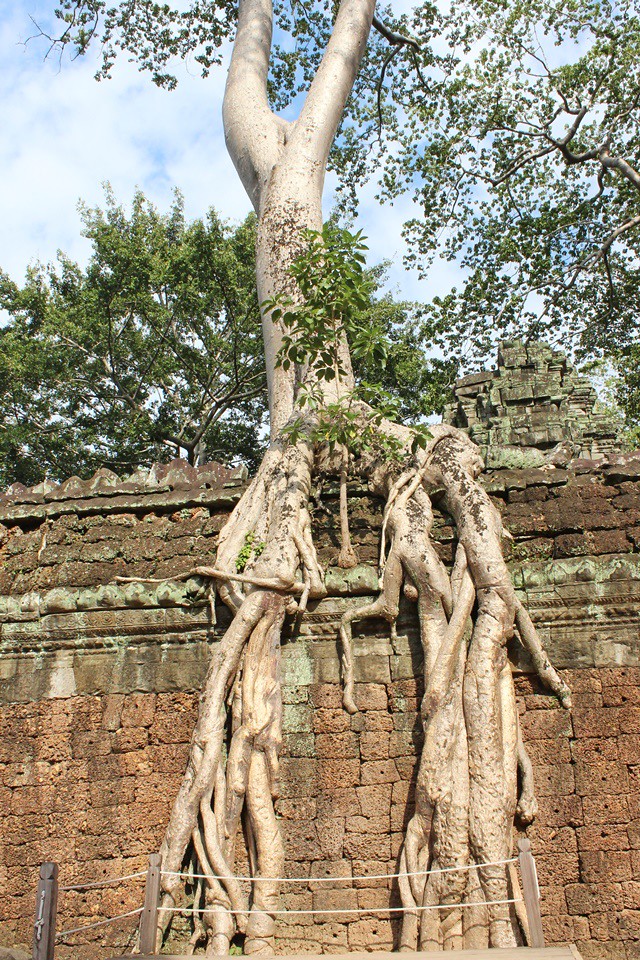
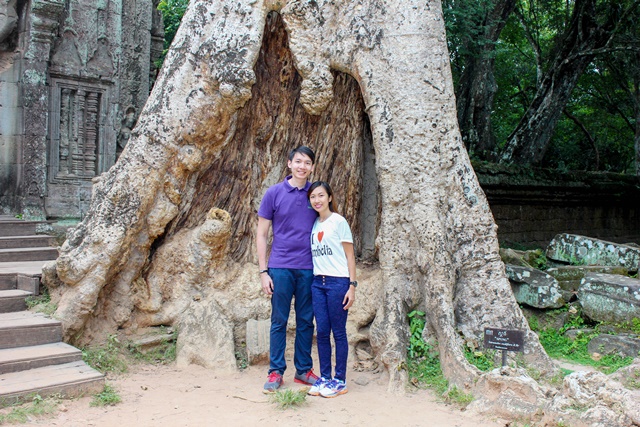
This kind of temple is very different from the Chinese-Buddhist temples that we’ve grown accustomed to. I thought it’s more like a park than a sacred destination where people go to pray. Ta Phrom, with the photogenic backgrounds and atmospheric combinations of trees growing out of the ruins, is one of the most visited complex in the Angkor region. Conversation and restoration of the site is still ongoing, with the help of the Archaeological Survey of India and the APSARA (Authority for the Protection and Management of Angkor and the Region of Siem Reap).
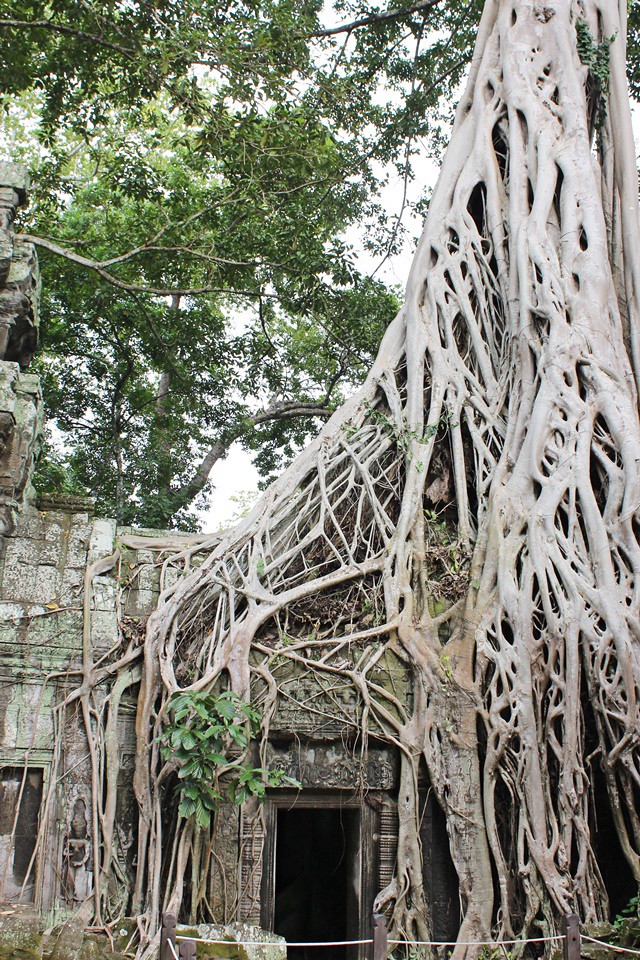
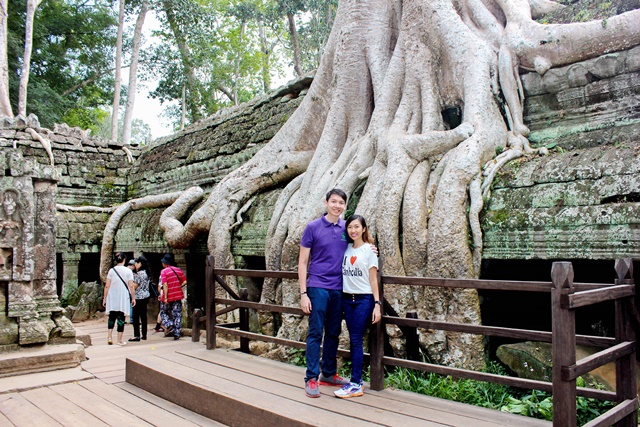
8. Phnom Bakeng Hill
Our tour guide advised us to go up the Bakeng Hill as early as 4:30PM to see the sunset at 6:00PM. Several other tourists started to quicken their trekking pace, and this was because everyone was trying to be the first 300 to reach the top. Per policy, only 300 people at a time could stay on the temple’s peak to witness the sunset view. We waited an hour in the queue for our turn. Look at the number of people staying in line. The Phnom Bakeng Bill literally is a crowd magnet at this “magical” time of the day.
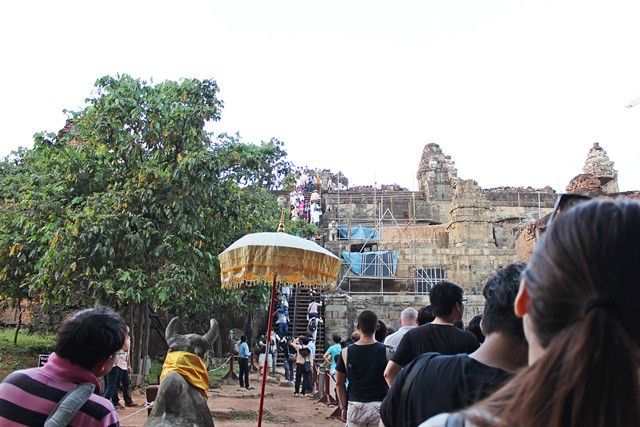
We were lucky to have taken a glimpse of the spectacular sunset. After we took the shot, we hurriedly descended downhill so others could still have their chance. Soon, it got darker and darker until we had to rely on our phone’s flash to see the paths to walk on. There were no street lights that guided us back, and this posed a challenge at the end of our journey.
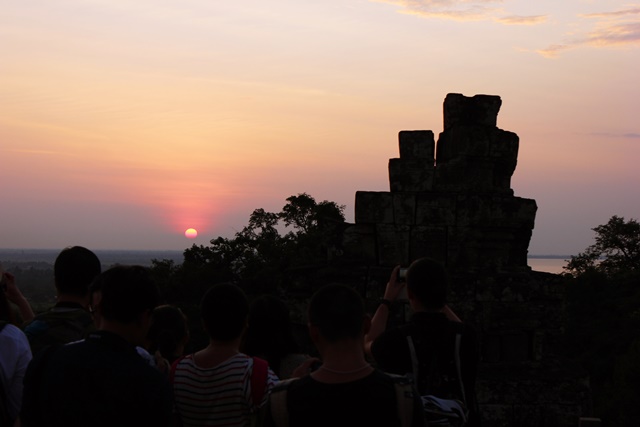
9. Pub Street
We spent our third day shopping in the outlet stores and tiangges in Pub Street and the Old Market. As the name suggests, Pub Street is a street full with bars and pubs left and right. It’s not too noisy in the daytime but it sure is the liveliest part of Siem Reap at night where entertainment is non-stop. Souvenir shops and massage centers also contribute to the good finds and experiences here. After a long walk around the Angkor Wat Complex, this is the perfect place to unwind and buy gifts for family and friends.


10. Psar Chaa – Old Market
The Old Market is like Divisoria (marketplace) in the Philippines. We came fully circle the entire market and saw how the place was bustling with people and overloaded with goods. It’s great that most vendors can speak and understand English well and they were not pushy in selling but were rather accommodating enough to make customers feel comfortable while looking around. This place mostly sells clothes, accessories, jewelry, arts and crafts, shoes, cooking materials, local herbs and spices, noodles, seafood, etc. The golden rule is to bargain hard.
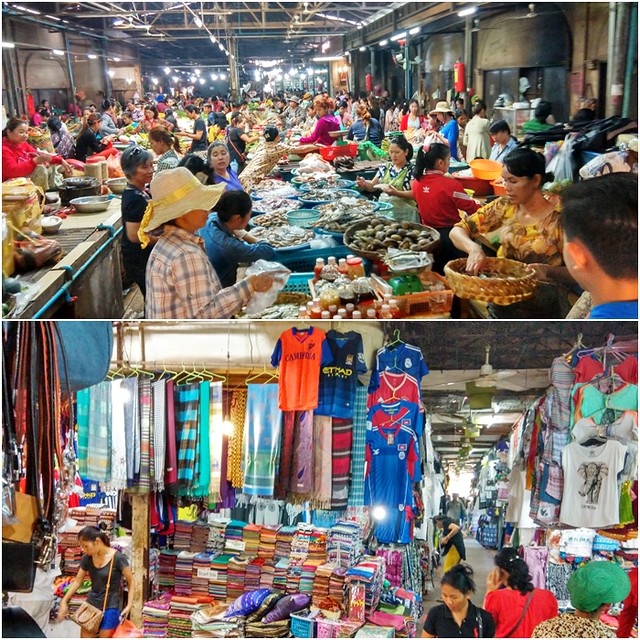
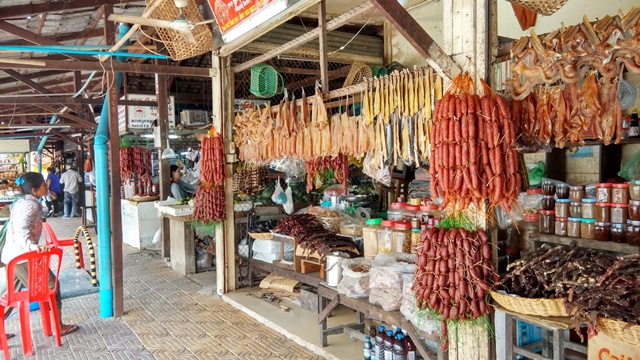
Wrap Up
Craving a change of scenery? Siem Reap in Cambodia is an ideal place to go for a dose of adventure. The trick is to find your way on how to maximize your time to go to all the temples worth visiting. This is the land of unparallelled art made in stone. Trust me, you have to see it to believe it. There’s no shortage of beauty here. I can imagine spending more time soaking up the local charm if only the weather wasn’t too humid.
Aside from the temples in the Angkor Wat Complex, tourist destinations in Siem Reap are also staples that are rich in history. They have the grandeur of a place out of the current time—everything a tourist needs to feel transported.
If you want a nice and friendly English-speaking guide in Siem Reap, you may contact Sokonthear (Thear, for short) through email (thearcam@yahoo.com) or call him at +855 95838663 / +855 98665787 for a hassle-free tour. He can arrange everything from hotel accommodation, travel itinerary (inclusive of entrance fees), restaurants to eat at, van transfer from airport to hotel and vice versa. 🙂

Leave a Reply to Meagan Browno Cancel reply